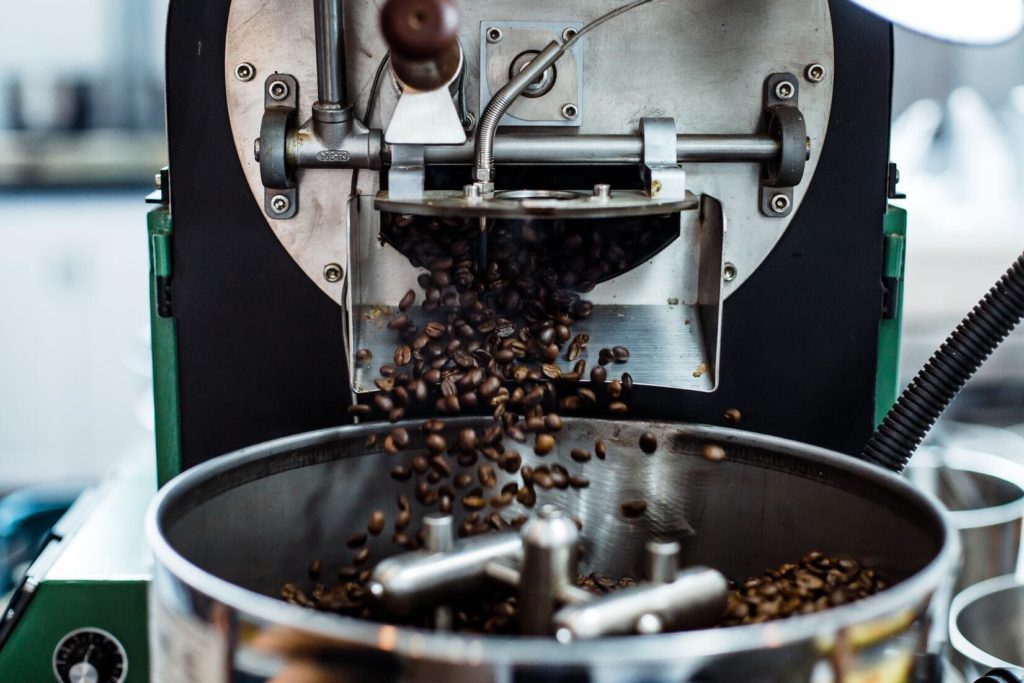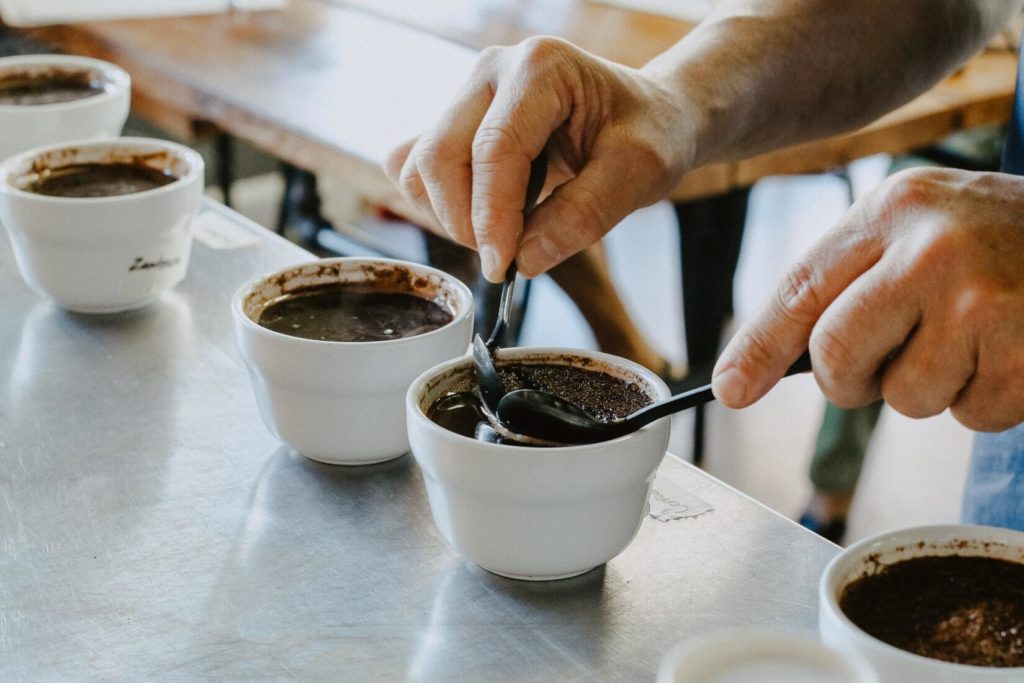
Often, coming to the store and reading the signatures on the packs of coffee, or visiting various sites in order to buy coffee in the online store, we come across not very clear numbers and their decryptions. Light roast, dark roast, Viennese or French roast – what is it really and how are they different?
It’s no secret that coffee beans before they are ground, are prepared in your favorite way, and get into our cup in the form of an excellent drink, are fried.
As with any product that goes through this processing stage, coffee beans can be roasted to varying degrees. A simple example is a classic steak, which has several degrees of doneness. Steaks of various roasts have their own qualities, their own taste. And each, including “Well Done” (steak doneness), has its fans.
It’s the same with coffee. Each degree of roast gives its own taste to the cup, filling it with unique characteristics inherent only to it. Much, of course, depends on the type of coffee, on the quality of the coffee beans, but if the roasting of coffee is done very badly, it will “kill” any, even the best, beans. Therefore, only fresh roasting of coffee on professional equipment, as well as an individual selection of the roasting profile for each type, proposed by the specialists of the Torrefacto online store, will fully reveal the aroma characteristics of different types of coffee. When freshly roasted grains, the finished drink acquires a deep, rich taste without foreign impurities and odors.
Roasting coffee beans

Green coffee is aged for some time in special rooms with climate control, after which it goes through the sorting stage. At the same stage, the grains are sieved and cleaned of various litter. Then the coffee goes to the roaster.
On an industrial scale, roasting takes place inside a constantly rotating roaster drum (roaster), heated from the outside, at a temperature of 200-230° C. In such drums, coffee beans are roasted constantly stirring. The fact is that the heat is not evenly distributed over the coffee bean, which is why it is important that the heat is distributed evenly and that the coffee moves continuously during roasting.
At the very beginning of the roasting process, coffee beans first absorb heat, then begin to release it. At this stage, the coffee starts to “shoot”, that is, you can hear clicks and crackles of beans. This stage is called “until the first click”. Depending on how far the roaster has planned, there may be more than one endothermic to exothermic phase change. That is, coffee can be roasted “until the second click” or more.
In heated coffee beans, the processes that change their character will continue to proceed, even if the heat is removed. To stop the roasting process in a precisely planned phase, the coffee beans are rapidly cooled by blowing cold air over them.
Roast degrees of coffee beans
There is no unified classification system for roasting degrees. Each country can use its own grades and names for them. You may find numbering: 1 to 5 or names: Cinnamon Roast, City Roast, Viennese, French…
The numbers indicate coffee from the lightest roast to the darkest (when the beans acquire a dark brown, tending to black, the shade of color). Usually, several degrees of roast are distinguished, which can be simplified into four main ones: light, medium, dark and high, each of which is divided into two more options: a slightly weaker roast and a slightly stronger roast.
Here, it seems, everything is clear. Let’s try to figure out these names.
1. Cinnamon roast
Cinnamon Roast is the process when coffee beans are roasted “to the first click”. The grains turn light brown and have a “dry”, that is, matte surface.
Such coffee has high acidity and a refined taste. Gives tart “grassy” flavors in the cup and is practically devoid of sweetness.
2. New English
The coffee beans take on a light, light brown color, but are still variegated in appearance. The coffee begins to release more aromatic oils.
Espresso made from New England Roast beans has a brighter aroma and flavor but still lacks expressiveness. The color of the finished coffee is light brown.
Coffee from such beans can be made at home in a Turk.
3. American roast
The coffee beans are roasted until light brown, but the color is not yet uniform, the coffee beans remain variegated. The surface of the grains is dry. The frying is stopped at the “first click”.
The acidity of such grains becomes muted, the sweetness and aroma become more pronounced. This roast can emphasize the characteristic features of some varieties. This roast is often used during professional coffee tastings. According to Coffiery, American roast coffee is suitable for preparation in a Turkish, French press, or drip method (filter coffee). To prepare espresso, a sharper flavor profile is required when fried and grains at a higher temperature.
4. City roast
With such roasting, coffee beans acquire a pronounced light brown color, and their surface becomes slightly oily, acquires a barely noticeable gloss.
This roasting method is typical for most coffees as it retains the natural flavor of the coffee beans, which is suitable for tasting certain coffees, although the roast flavor is slightly noticeable.
Such coffee can also be prepared in traditional ways (in a Turk, French press or geyser coffee maker) and used to prepare espresso in a coffee machine. The taste of the drink becomes noticeable sweetness with a caramel shade of burnt sugar.
5. Full city roast
The beans are fried until the “second click” begins, their color becomes slightly dark brown, the surface becomes dry. Small droplets or faint spots of oil appear on the surface of the grains.
The sweetness of the coffee begins to diminish, and chocolate notes appear in the aroma. The taste itself becomes more intense and takes on a characteristic roast character.
This roast is used to prepare espresso in coffee machines.
6. Viennese roast
Coffee beans are roasted until the middle of the “second click”, as a result of which they acquire a moderately dark brown color, their surface becomes more and more oily.
The beans acquire a bittersweet, caramel flavor, but the acidity in such coffee is greatly muted. With this roast, the origin of the coffee bean is difficult to determine as its characteristics obstruct the roasted flavor.
Espresso is made from Viennese roasted coffee. The drink has a bright, rich aroma, with a characteristic coffee bitterness. You can drink this coffee at any time of the day.
7. French roast
The grains take on a deep dark brown color, while they become shiny with oil. The beans are roasted until the end of the “second click”.
The roast flavor is predominant in this type of coffee, and none of the characteristic aromas of the coffee beans remain.
The French roast is often referred to as “the very heart of the dark roast.” This is probably the most popular espresso roast. When brewed, a dark drink with a pronounced bitterness is obtained.
How does the strength of coffee depend on the degree of roast?

Yes, in general, not at all, if we are talking about the strength of coffee in a cup. In general, the darker the roast the coffee, the lower the caffeine content. For light roasts, this figure is about 1.37%, for dark roasts – 1.31%. This is if we talk about the grain itself.
But when we talk about coffee in a cup, then it all depends on the amount of prepared coffee (that is, on the coffee/water ratio), on the size of its grinding, on the chosen method of preparing the drink. One and the same coffee in beans can ultimately be prepared in such a way that the strength of the finished drink will vary greatly.